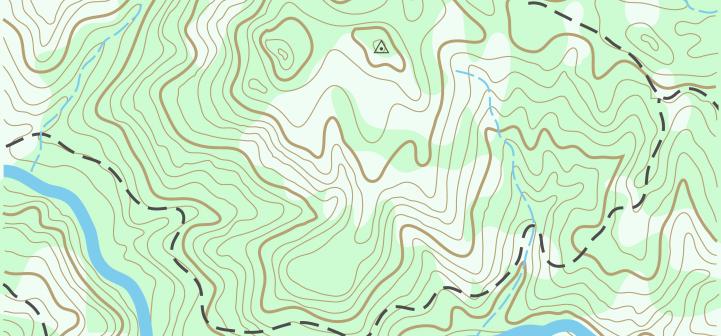This term is often used when considering image acquisition through remote sensing and refers to the time of the year during which an image is taken. Leaf-on and leaf-off refer to the presence or lack of the foliage of woody species. Leaf-on imagery means that there is foliage on the tree or shrub species (or the species of interest). Leaf-off means that there is no foliage or a reduced amount of foliage on the tree or shrub species.
Sometimes it …
What are GPS differential corrections?
Every time a GPS receiver calculates its position, there is some amount of error inherent in the calculated position. Errors can be introduced from a number of sources (e.g., GPS clock errors, atmospheric conditions, the distribution of GPS satellites) over which the GPS user has little control.
Differential correction is a commonly used technique to reduce the systematic errors that decrease the accuracy of GPS positions. All differential correction techniques use correction data from a GPS base station to improve …
What is mobile GIS?
Mobile GIS is taking Geographic Information Systems (GIS) out of the office and into the field. A mobile GIS allows folks out in the field to capture, store, update, manipulate, analyze, and display geospatial data and information. Mobile GIS integrates one or more of the following technologies: * mobile devices (such as a PDA, tablet, or laptop computer, and in some countries mobile phones) * Geographic Information System (GIS) software * the Global Positioning System (GPS) * wireless communications for …
What is the difference between a recreational grade GPS, a mapping grade GPS, and a survey grade GPS?
1. Recreational grade GPS receivers are sold at most box stores and at many sporting goods and camping stores. They are also available widely through Internet retailers. These units are the least expensive grade and are generally accurate to within +/- 25 feet (7.6 meters). These receivers run in the $100 to $600 range and are the type most often purchased by the general public.
2. Mapping grade GPS receivers are generally sold by “high end” and licensed resellers. These …
Which factors should be considered when choosing remote sensing products?
Factors to consider when selecting remote sensing products include spatial resolution, spectral resolution, radiometric resolution, and temporal resolution.
Spatial resolution refers to the size of the smallest object that can be detected in an image. The basic unit in an image is called a pixel. One-meter spatial resolution means each pixel image represents an area of one square meter. The smaller an area represented by one pixel, the higher the resolution of the image.
Spectral resolution refers to the number …
What is the difference between multispectral and hyperspectral imagery?
Multispectral imagery is produced by sensors that measure reflected energy within several specific sections (also called bands) of the electromagnetic spectrum. Multispectral sensors usually have between 3 and 10 different band measurements in each pixel of the images they produce. Examples of bands in these sensors typically include visible green, visible red, near infrared, etc. Landsat, Quickbird, and Spot satellites are well-known satellite sensors that use multispectral sensors.
Hyperspectral sensors measure energy in narrower and more numerous bands than multispectral …
What does vegetation index mean in remote sensing technology?
A vegetation index (also called a vegetative index) is a single number that quantifies vegetation biomass and/or plant vigor for each pixel in a remote sensing image. The index is computed using several spectral bands that are sensitive to plant biomass and vigor. The most common vegetation index is the normalized difference vegetation index (NDVI). NDVI compares the reflectance values of the red and near-infrared regions of the electromagnetic spectrum using the following formula: NDVI=NIR-RED/NIR+RED NIR is the pixel’s reflectence …
What is a spectral signature in remote sensing?
Features on the Earth reflect, absorb, transmit, and emit electromagnetic energy from the sun. Special digital sensors have been developed to measure all types of electromagnetic energy as it interacts with objects in all of the ways listed above. The ability of sensors to measure these interactions allows us to use remote sensing to measure features and changes on the Earth and in our atmosphere. A measurement of energy commonly used in remote sensing of the Earth is reflected energy …
What is remote sensing, and how can it be used?
In the area of geospatial technologies, remote sensing generally refers to satellite imagery or aerial photography.
Remote sensing provides the ability to observe an object without coming in direct contact with that object. Your eyes are extremely sophisticated remote sensing devices!
The “bird’s eye” view from the satellite or airplane, in combination with its ability to store, analyze, and display the sensed data, make remote sensing a powerful tool. Remote sensing techniques generally fall into two categorizes: active remote sensing …
How can I obtain an aerial or satellite image for my area?
Historic aerial photography (in some cases dating back to the 1930s) is often available from the Natural Resources Conservation Service (NRCS) regional/local office or the Farm Service Agency (FSA) office. Recently acquired aerial photography can often be obtained from your local government (city/county government) office. Contact the local government GIS coordinator. Most cities and larger towns have someone responsible for GIS. If not, then often the planning department, assessor’s office, or engineering department is a good place to get started.…
